Does your kid walk in the night? You need to know some facts and early signs associated with sleep walking in children. It is more important to address this issue at the early stages to protect your kid from the injuries and dangerous situations.
Sleepwalking is a form of sleep disorder. National sleep foundation estimated that 15% of the population are sleepwalkers. Sleepwalking occurs in the first two hours of the sleep. Not all the sleepwalkers usually walk. Some kids sit up or stand in bed and act like they are awake. Some others move around the bed from few seconds to minutes.
This article discusses the causes of sleepwalking in children. It presents the signs and ways to stop sleepwalking in children.
What is Sleepwalking?
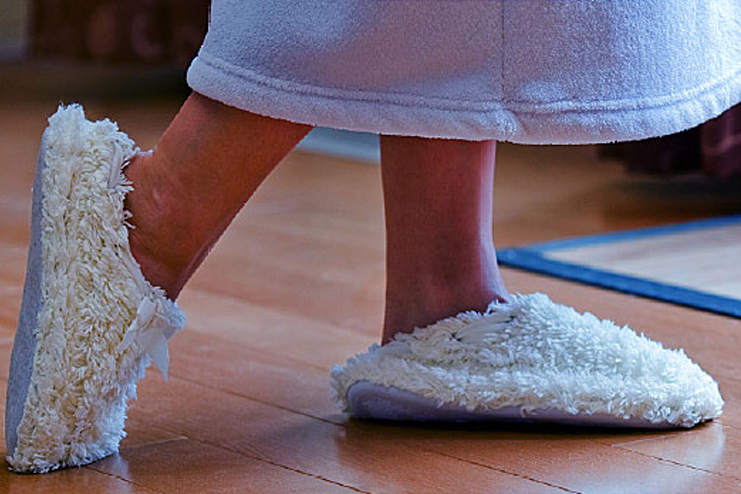
Sleepwalking is formally known as somnambulism. It is a behavioral disorder that commonly originates in the sleep and results in complex behaviors. The complexity of the behaviors may vary from harmless to extremely dangerous. These actions are performed in the state of low consciousness. Sleepwalking starts in two hours after the sleep and lasts for about an hour. It is more likely to occur both in the adults and children with sleep deprivation.
It can be diagnosed in the children between the ages of 4 and 8. It is more common throughout the childhood and rarely a issue to be concerned. But, proper attention to be provided.
What Causes Sleepwalking in a child?
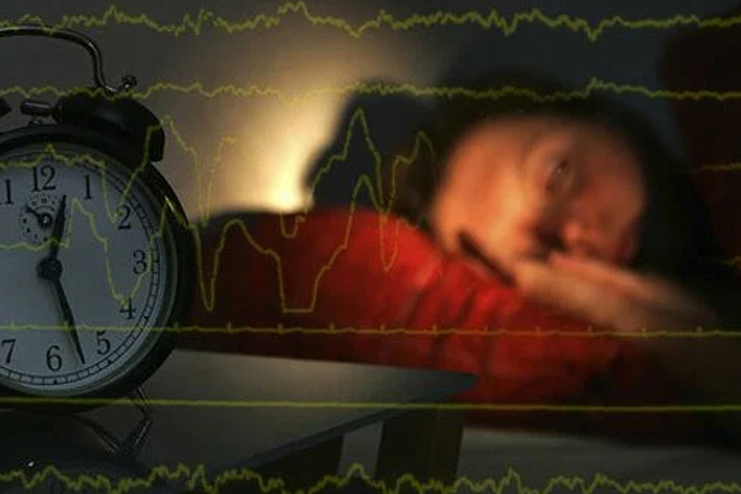
It is an undesirable behavior that occurs during the sleep. Sleepwalking is usually associated with the psychological or emotional problems in the child. Here are a few sleepwalking toddler causes:
• Lack of sleep
• Improper or irregular sleep routines
• Interruptions in the sleep
• Being in a different sleep environment
• Certain medications
• Any family history of medications
• Stress or anxiety
• Little or no memory of the event
However, the sudden onset of sleepwalking in the adulthood may be the underlying sign of other underlying issues. Some underlying conditions that cause sleepwalking in children are:
• Night terrors
• Migraines
• Head injuries
• Restless legs syndrome
• Periodic limb movement disorder
• Gastroesophageal reflux disease
Symptoms of sleepwalking in children:
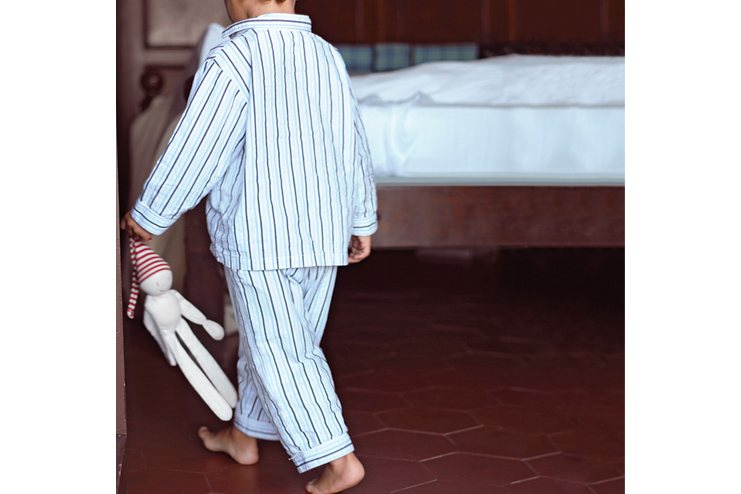
Sleepwalking is not only waking up in the night and walking around. It is also associated many behavioral problems. Here are a few early signs of sleepwalking in children:
• Sitting up in the bed and doing the actions repeatedly
• Talking during the sleep and they usually do not respond when spoken to
• Urinating near the doors
• Performing the activities like opening or closing the doors and windows.
Complications associated with the sleepwalking:
Here are some complicated behavioral problems that are associated with the sleep walking in children:
• Hurt themselves- this occurs in the cases when they walk near the furniture or stairs.
• Sleepwalking makes the children to experience prolonged disruption which results in the day time sleepiness and abnormal behaviors in the school.
• Experience problems with social relationships
• Disturb other’s sleep and sleepwalking children are rarely to hurt someone nearby.
Ways to Stop Sleepwalking in Toddlers:
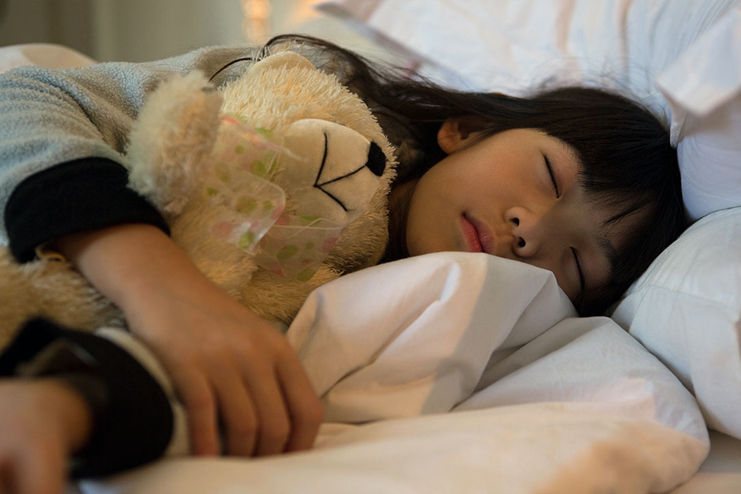
Sleepwalking is not the dangerous act by itself. But, if the child is left unnoticed, they are at the risk of falling down, or run into something, open the door or windows etc. So, it is most important to keep them safe from dangers or making something harmful.
There is a misconception that a sleepwalker should not be awakened. They are likely to harm themselves and others if not awakened.
Here are a few ways to help your toddler get rid of sleepwalking:
1. Don’t distract their sleep:
Make sure that your child’s room is free from noises. Don’t turn on the music or perform the activities that distract their sleep.
If your child tries to get out of the bed, gently guide them to lie back to their position.
2. Maintain regular sleep schedule:
Healthy sleep habits welcome many great changes and good results into the life. Make your child to have the consistent sleep routines.
Here are a few tips for the healthy sleep schedules:
• Make your child to stick to the same bedtime and wakeup time even on the holidays
• Encourage your child to inculcate some bedtime routines like reading a book, or listening music.
• Make your child to avoid naps in the morning on their holidays
• Encourage your child to exercise daily
• Keep your kid’s room clean and away from the distractions
• Make sure that your kid is comfortable with the mattress and pillows.
3. Create a comfortable sleep environment for your child:
Offer a dark, and quiet environment in their room while they are sleeping. Keep your child away from the screen time before they sleep. Maintain comfortable room temperature.
Avoid giving caffeine or any sugar related products before bedtime.
4. Make sure your child empties bladder before the bedtime:
Limit the amount of liquids before bedtime and ensure that they visit the bathroom before they sleep. This prevents your child to get down from the bed subconsciously in the search of bathroom.
5. Help your child to limit the stress:
Stress is the major factor for sleep deprivation in children. Help your child to stand against and face the fears instead of running away from them. Tell your child not to crave for the perfection. Don’t force or stress your child to reach your expectations. Make them feel assured all the time.
Help your child to cope with the challenging tasks in a proper manner.
6. Keep your child safe:
Keep the doors and windows closed. Ensure that at any cost your child should not reach the staircase in their sleep. Do not let your child to sleep in the bunker bed. Remove any kind of sharp or breakable objects near their bed. Keep the comforting and safe toys available to them.
7. Let your family members know about the sleepwalking:
This is the safety tip that helps you to protect your child from injuries or dangers. Make everyone in your family to be aware of sleepwalking in your child and seek their support to help your child get rid of sleepwalking.
Spreading the news of your child’s sleepwalking behavior among your family members helps you to protect your child from all the sides.
8. Redirect your child back to sleep:
Some parents might think that it is dangerous to wake the sleepwalking children. The answer is no. A sleepwalking child if left unnoticed may harm themselves or hurt others.
The best thing is to help your child to get into the bed before they wake up completely. Children who woke up this state may seem confused and find difficulty in going back to sleep. Help your child to get into the sleep with by gently tapping on their back on tummy. This offers assurance and comfort to the child.
9. Follow some measures to prevent injuries during sleepwalking:
Make your house safe and comfortable to reduce the injuries as the sleepwalking kids are likely to perform various complex activities.
Allow your sleepwalking child to sleep over the bed which is arranged on the floor. Put the guard rails on the bed. Lock the pantry shelves which has knives, and other sharp instruments.
10. Use a security alarm:
Nothing is impossible in this advancing technological era. Make use of technology to secure your sleepwalking child. Install an alarm at the doors and windows. As soon as the doors or windows open the alarm sounds alerting everyone.
These devices are affordable and offers many parents peace of mind.
11. Try anticipatory awakening:
If your child sleepwalks at the same time every day, then try to keep them awake before that specific time. This reduces the chance of sleepwalking.
Wake up your child 15 minutes before their sleepwalking routine and allow them to awake for 5 minutes. This helps them to enter into the differ stage of sleeping that prevents sleep walking.
12. Make your kid’s room to smell good:
Nice aroma can help your child to have distortion less sleep. It can make your child to have sound sleep.
Studies recommend that inhalation of essential oils will help to suppress the negative emotions and helps the people with mild sleep disturbances. Lavender oil, chamomile, and frankincense will help your child to cope with the sleep problems.
13. Give your child more nutritious food:
Studies show that nutrients play a prominent role in the quality and the duration of the sleep. Some studies suggest that magnesium will help the people to have better sleep.
Calcium also reduces the difficulties associated with the sleeping. All the diary products are the rich source of calcium. Offer your child a glass of milk before bedtime. This helps them to have quality sleep.
14. Make your child to sip sleep promoting teas:
People are turning towards the herbal teas that helps them to fall asleep easier and have the quality sleep.
A few herbal teas that can be offered before bed time are:
Chamomile Tea: Studies suggest that chamomile extract has sedative properties on hospitalized elderly and helps them to have better sleep. The sweet and daisy like flower helps to promote the sleep by reducing the symptoms of anxiety. Allow a teaspoon of chamomile leaves to boil in a cup of water for five minutes. Strain and offer this tea to your child. You can also add a few drops of chamomile essential oil to the bath tub of your child.
The other herbal teas that can promote the quality sleep are Valerian, passion flower, and California poppy.
15. Recognize the root cause and provide appropriate therapy:
Check for any underlying psychological problems like anxiety, stress, sleep deprivation, poor sleep habits and offer the appropriate therapy targeting the root cause.
16. Seek Medical help:
If your kid is unable to get relief from the sleepwalking even after proper sleep habits and often gets injured by sleepwalking, then your doctor may prescribe you some medicines to treat sleepwalking.
Medications are usually not recommended for the children except for the severe underlying causes. The following are a few prescribed medicines:
• Benzodiazepines- it has sedative effects and helps the person to have the distortion less sleep.
• Antidepressants or anti- anxiety medications to deal with high levels of stress.
Treatment for sleepwalking in children:
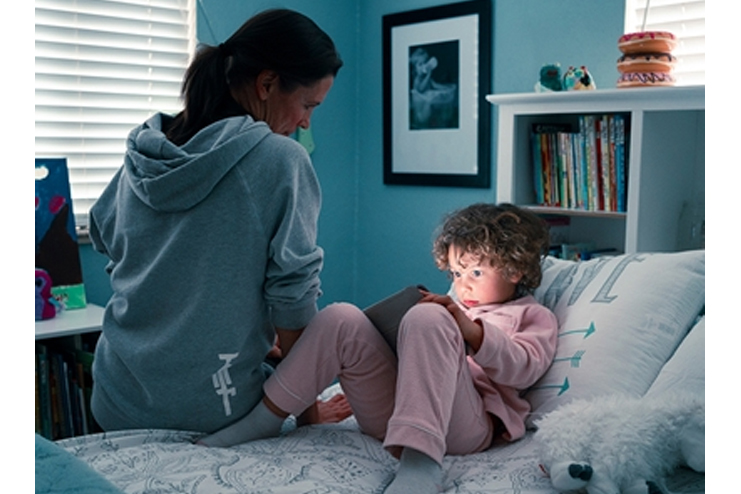
Specifically, there is no method to treat sleepwalking in children. In many cases, some comforting and soothing sleep habits help to blemish the sleepwalking in children. You should speak to the doctor about the ways to prevent injury during sleepwalking and the prevention of any underlying illness.
• A study published in the journal of sleep medicine, observed that sleepwalkers who underwent this therapy are almost free from sleepwalking in 5 years followed by 42% free in 18 months.
• Hypnosis is the technique used to treat sleepwalking in adults. Medical therapies such as sedative hypnotics or antidepressants are effective ways to treat sleepwalking in some people.
• Apart from the hypnosis, another method that doctors use is biofeedback. Where certain parameters like heart rate, blood pressure, and muscle tension are checked as they play an important role in the quality sleep. The theme of biofeedback is to make your child feel more comfortable by allowing them to achieve voluntary control over the distractions.
When to see a doctor for night walk in children?
The episodes of occasional sleepwalks are common which may be the result of restless or deprived sleep. Consult the sleep specialist if your child’s sleep walking episodes involve the following:
• If the sleepwalking occurs more than two times a week or several times in the same night.
• Sleepwalking harms sleepwalking children and others.
• If sleepwalking impacts the day time activities or the functioning of the kid
• If sleepwalking is accompanied by breathing or movement disorders
• If carried into adolescence stage
In conclusion, sleepwalking is common in children. But, if turns frequent, prolonged, and dangerous additional intervention is necessary. Diagnose sleepwalking in your child at the early stages before it harms your child. Offer emotional and psychological support to your child that help to get rid of sleepwalking.







































